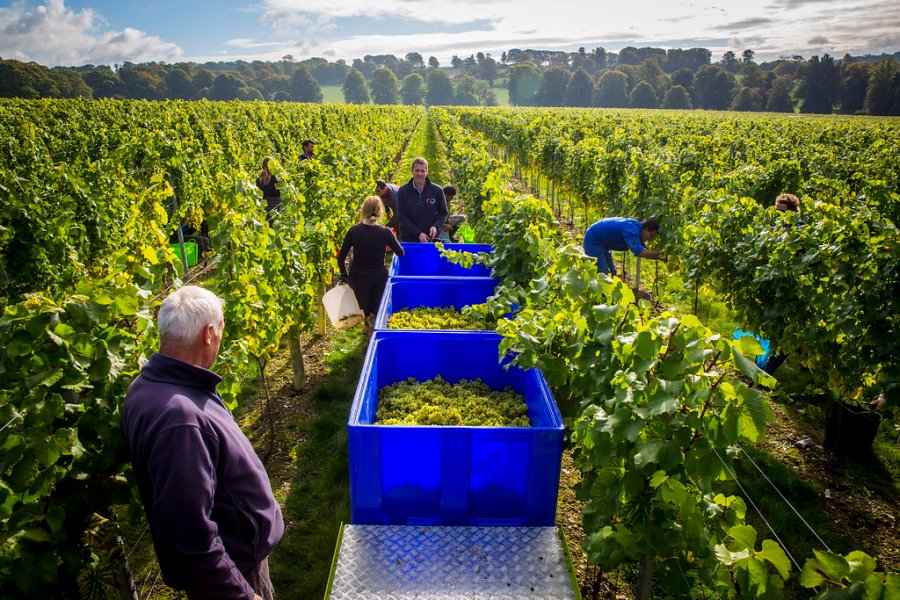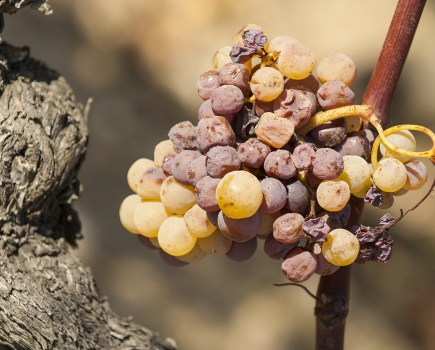1. Organise labour and logistics
Harvest is dependent on many variables coming together at just the right time, from the weather and grape readiness, to the availability of transport, pickers and winery capacity. Juggling so many moving parts is not easy, so the importance of good planning cannot be overestimated.
Book labour early, and plan individual responsibilities, while also considering how best to organise containers, bins, transport, tools, staff well-being (toilets, food, etc), and other practicalities.
The aim is to minimise downtime and ‘keep pickers picking’. Simple things like ensuring pickers don’t have to walk too far to collect fresh containers, or waste time waiting for bins or transport, can make all the difference.
Labour availability remains a big issue, especially when grape harvests compete with apple, pear and soft fruit demands. It is why many larger vineyards are now looking at machine harvesting as an alternative, although this brings other logistical considerations, not least how to transport and process crops that come off vineyards far quicker than those picked by hand. Machine harvesting is not as gentle as hand picking, so speed is of the essence once juice starts to run in harvested crops.
2. Monitor grape readiness
Deciding when to start harvest is perhaps the biggest single decision any grower can make in terms of wine quality. With grapes being such a perishable commodity, there is little room for delay once crops hit the quality ‘sweet-spot’ for Brix and acidity levels.
In unsettled autumns, Botrytis is an inherent risk when holding out for rising Brix and falling acidity, so it is important to maintain disease control right up to harvest, although always adhere to harvest intervals on any products used.
Good communication with your winery is essential for hitting the optimum harvest timing and ensuring the daily pressing capacity is there when you need it. Be realistic about the volume of grapes expected and when they will be ready, and keep the winemaker informed if things change.
3. Pre-picking quality control
To help speed-up picking work rates, it may be worth going through the vineyard before harvest to remove underripe bunches, or those that have succumbed to Botrytis or mildew, and carry out some leaf stripping to expose healthy bunches.
Doing so can benefit juice quality by reducing the risk of diseased grapes tainting the wine, while also allowing pickers to focus on the single task of picking healthy bunches, without having to worry about grading or quality control. It is of course, reliant on having the labour available before the main harvest period begins.
Trimming vegetative cover in alleyways and removing tall weeds, such as thistles, can also make life easier for picking teams and improve work rates.
Wasps are a perennial problem as grapes ripen, especially in early maturing varieties like Solaris and Siegerrebe, and very hard to control. Locating and destroying nests is theoretically the best approach, but it is usually much easier said than done. Precision monitoring with multiple traps may help.
4. Plan health and safety
One aspect not to be overlooked in the planning process is health and safety. Accidents can, and do occasionally, happen, so whether you are using hired gangs, in-house employees, or inexperienced volunteers, risk assessments must be done and adequate training provided.
In many cases this can be a simple printed information sheet that staff read before beginning work, and retain a copy of. If foreign staff are used, make sure there are versions available in their native language if unable to read English.
5. Motivate staff
Motivating staff, whether paid or volunteers, is crucial to get the most out of them and help everyone feel a valued part of the team. It may sound like ‘HR babble’, but if people are genuinely enthusiastic and motivated to work, productivity will benefit. Rather than just turning up and serving their allotted time, enthusiastic staff give back ‘discretionary effort’ over and above doing the bare minimum, so think carefully about how best to motivate everyone.
Picking is a skilled job, and if a worker is struggling to achieve reasonable output, consider whether their skills are better put to use in other roles, that may then increase the productivity of the whole picking team.
Finally, as picking progresses, it is useful to note any spatial variation in yields across the vineyard, as this may help identify underperforming areas to target for closer inspection once harvest is over.




